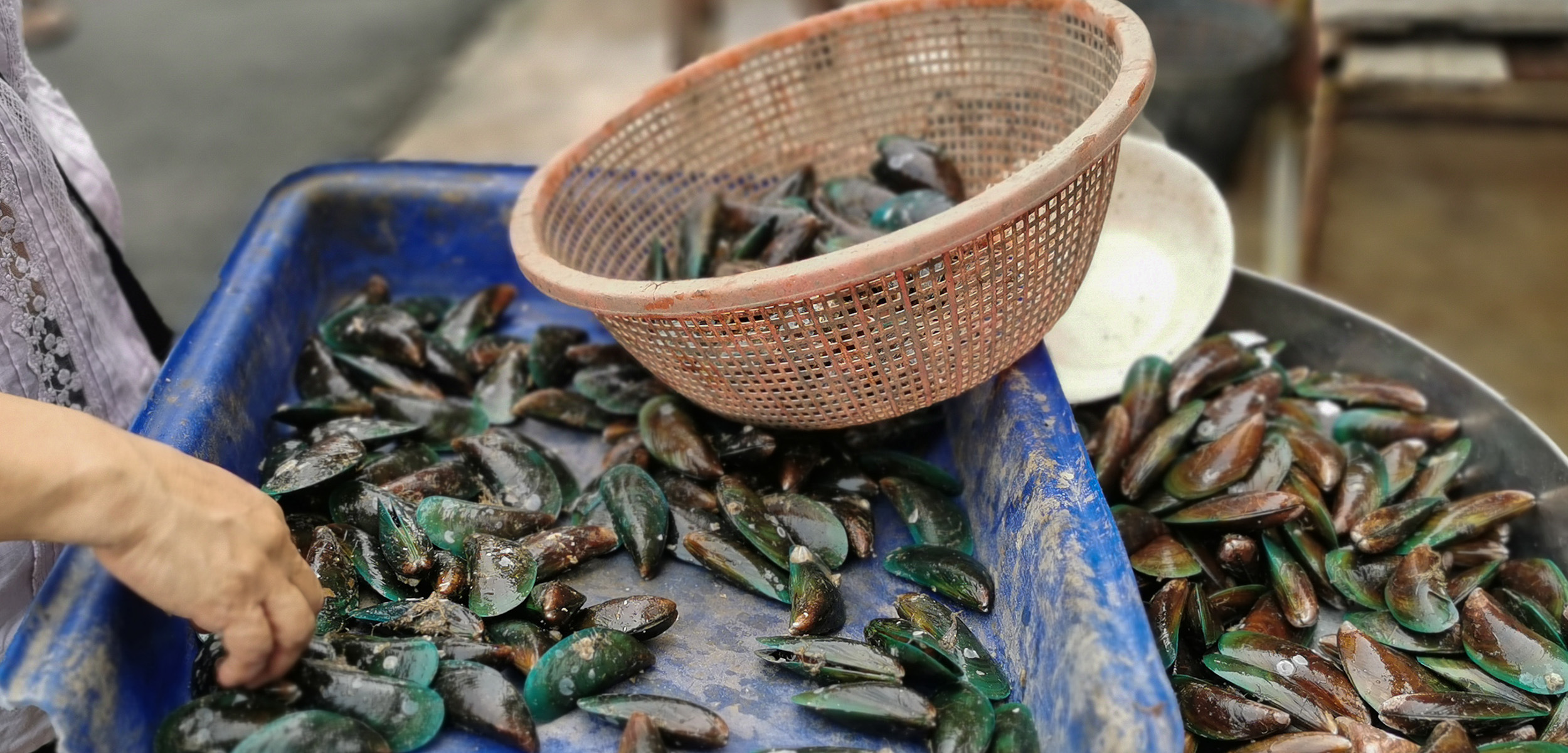Weaving the Harbor Back to Life
How Māori knowledge is helping to revive the mussel population in New Zealand’s Ōhiwa Harbour.
Article body copy
Tī kōuka are tough. These Seussian, palm-like trees, native to New Zealand, are topped with tufts of fibrous, bladed leaves. Also known as cabbage trees, tī kōuka are the nemesis of the nation’s lawn mowers, clogging them with their thick, shiny leaves. But these leaves also repel water and have made great building materials for generations of Māori.
“It’s a survival plant,” says Kura Paul-Burke, a marine scientist at New Zealand’s University of Waikato and a member of the local Ngāti Awa and Ngāti Whakahemo iwi (tribes). Whether you’re looking to start a fire, build a roof, or construct a leafy raincoat, tī kōuka leaves have seen heavy use by Māori “prior to colonization, during colonization, and up to today,” says Paul-Burke.
Now, Paul-Burke is working to develop a new job for this storied plant—one that could address two contemporary problems afflicting her homeland in Ōhiwa Harbour, on the east coast of New Zealand’s North Island. One is a largely local concern: the decline of the green-lipped mussel. The other is a global crisis: marine plastic pollution.
Green-lipped mussels are a popular and nutritious food that people—Māori and non-Māori alike—used to harvest regularly around Ōhiwa Harbour. Some would freedive to the harbor floor to pluck the black and green ombré, barnacle-encrusted shellfish from their beds, while others would collect them from exposed rocks at low tide. Yet over the past few decades, green-lipped mussel numbers saw a sharp decline. Local iwi leaders were concerned and banned harvesting to see if it made a difference. But in 2009, Paul-Burke and her boat skipper husband discovered the real culprit: a proliferation of eleven-armed sea stars, voracious eaters of juvenile mussels.
Yet it was while surveying the flagging mussel population that Paul-Burke caught a glimpse of how to help them. Ōhiwa Harbour is peppered with boats at anchor, and she noticed that juvenile mussels were thriving on the boats’ mooring chains where the sea stars couldn’t reach them. She dreamed of building floating restoration stations—safe spaces where baby green-lipped mussels could attach, grow, and eventually help repopulate the seafloor.
Fortunately, getting juvenile mussels to grow on dangling ropes is simple enough. In commercial mussel farming, these ropes are called spat lines—named for spat, mussels’ larval form. So in 2019, Paul-Burke and her colleagues set up their first experimental juvenile mussel protection stations using commercial plastic spat lines.
It worked. The baby mussels started to thrive. But Paul-Burke was feeling squeamish. She was putting more plastic in the ocean.
Māori sea gods “Tangaroa and Hinemoana are tough on gear,” she says. “Things are going to break, that’s understood. So how do we mitigate the impacts of that for our ocean?”
All along, Māori knowledge has guided Paul-Burke’s research. On a harbor-wide boat ride at the start of the project, local elders pinpointed the spots where mussels used to grow. Their knowledge helped guide the decisions on where to install the mussel restoration lines. So here, too, she turned to her community.
Paul-Burke sought out Rokahurihia Ngarimu-Cameron, a local weaving expert at Te Wānanga o Aotearoa, a Māori educational institution with more than 80 locations around New Zealand. She learned how to work with natural fibers that had traditionally been used to make strong ropes—ropes that would biodegrade when their job was done.
Together, Paul-Burke, Ngarimu-Cameron, and their colleagues created and tested lines woven from several native fibrous plants. Tī kōuka was the clear favorite. When used as a spat line, it breaks up after about three to six months. By then, mussels are better equipped to survive on the seafloor.
Paul-Burke found that the lines’ biodegradability streamlined and improved the restoration process. In her earlier attempts with plastic lines, she had to haul them in, then pluck off the young mussels and toss them overboard, where they often got separated and swept away by the current. On the tī kōuka lines, however, the young mussels fell to the seafloor in clumps “as a whānau,” she says—as a family. This minimizes disturbance and more closely mirrors the way mussels naturally grow and colonize new areas in clusters.
Since then, the team has put tī kōuka spat lines to work across all their restoration stations. The work has captured the interest of iwi and conservation groups around the island, several of which have since begun trialing their own biodegradable spat lines using similar methods, though not always the same plant. Paul-Burke and her husband now travel regularly to other coastal communities to share what they’ve learned.
“We’ve already seen lots of the harmful impacts of plastic waste from mussel farms on the seafloor,” says Jenny Hillman, a marine scientist at the University of Auckland in New Zealand who was not involved in the work. “So, we’re really excited about what this research offers to support better practices in mussel restoration—and in the aquaculture industry.”
Paul-Burke has been approached by several commercial mussel farmers who are curious about swapping plastic for plants. But the mass-produced synthetic lines are still far cheaper than hand-gathered, hand-woven alternatives, she says, so commercial uptake seems unlikely unless policies change to encourage or enforce it.
Four years on, the restoration stations seem to be working. Along with efforts to trap and catch sea stars, the stations have helped the mussels rebound. From just under 80,000 in 2019—all located in a single bed—their population has now swelled to about 800,000. That number doesn’t include the new bed, which Paul-Burke and her research team discovered in August, containing about 16 million young mussels.
“I actually cried while I was diving there,” she says. “It’s mind-numbingly beautiful news, especially for Ngāti Awa, because it’s an area where our ancestors traditionally used to harvest.”

